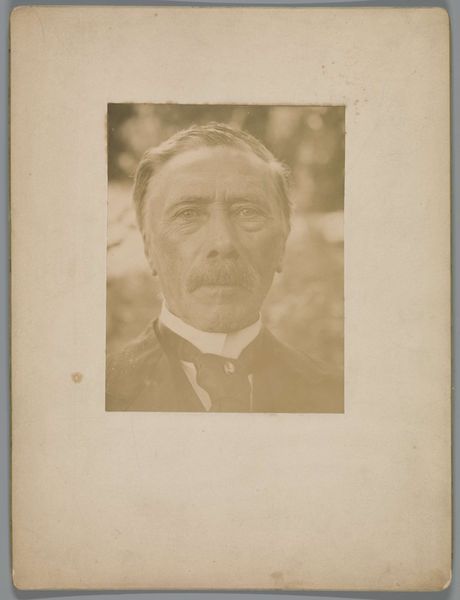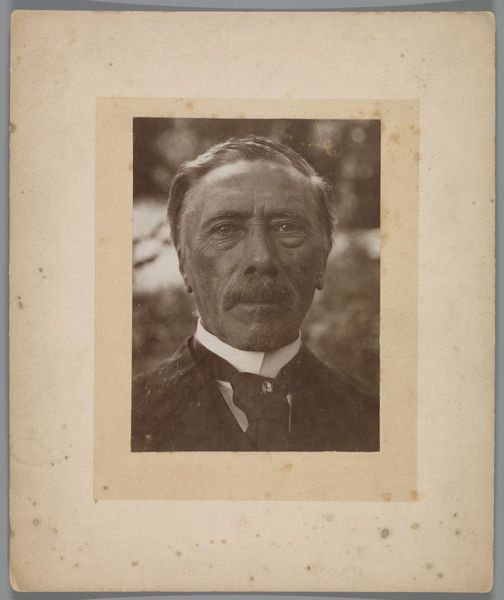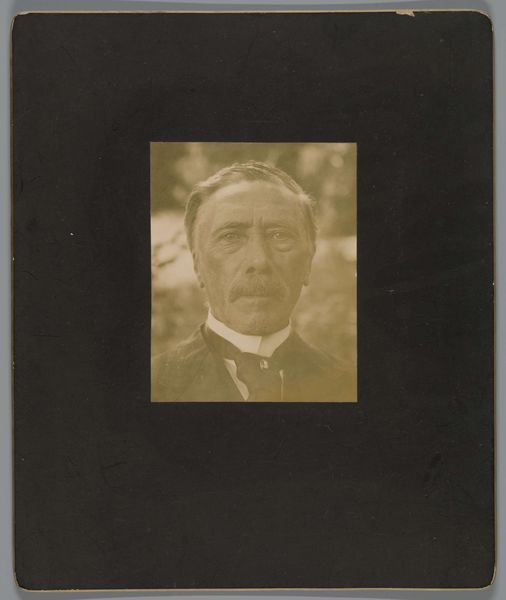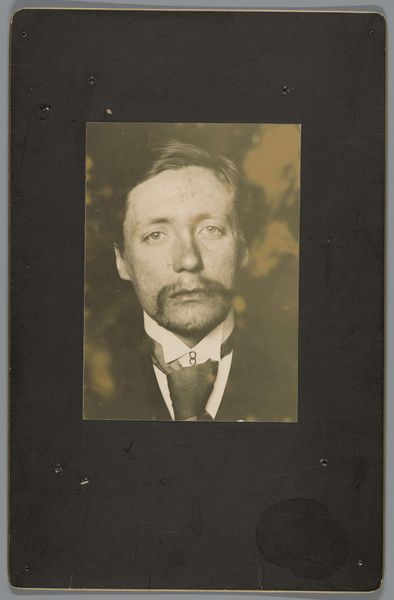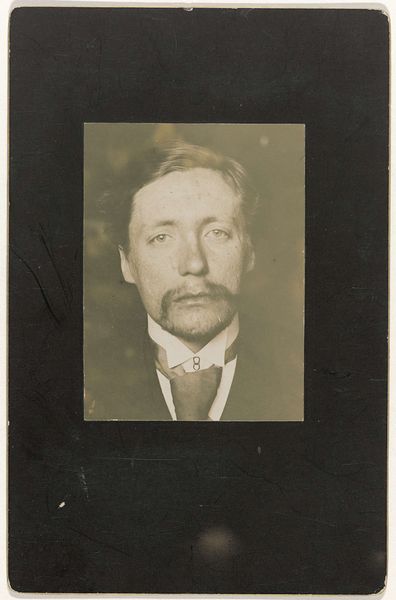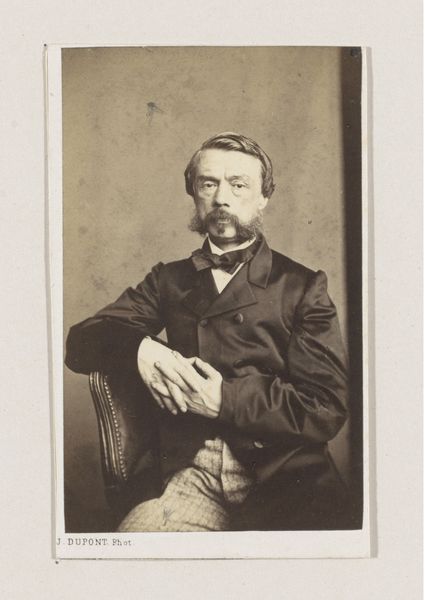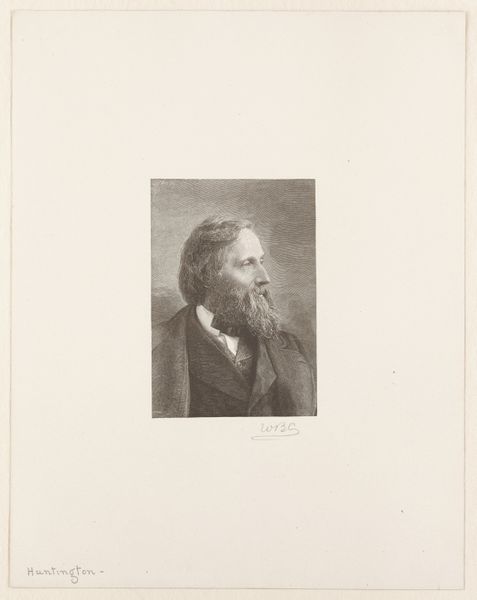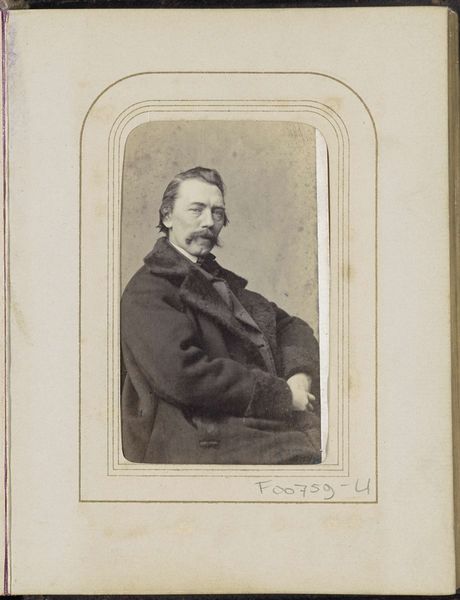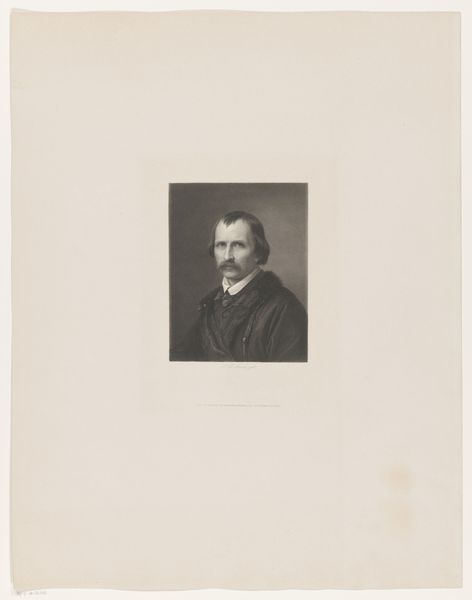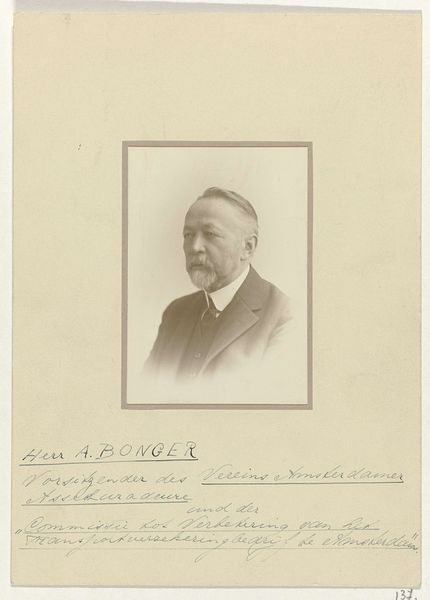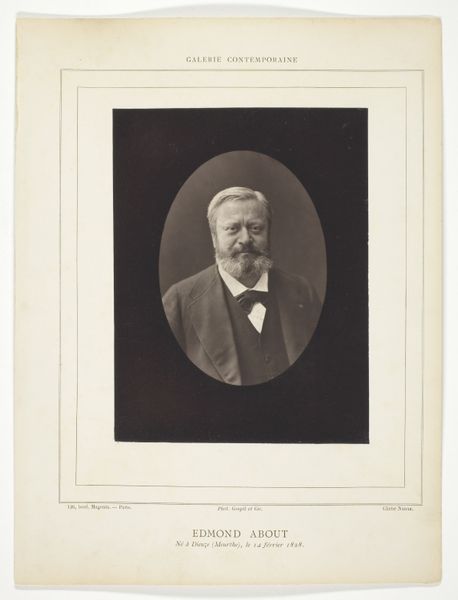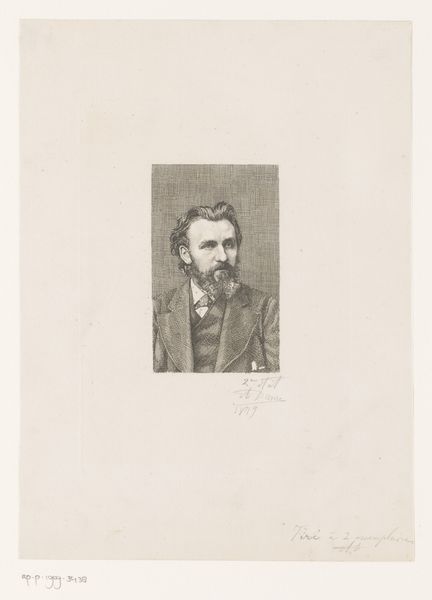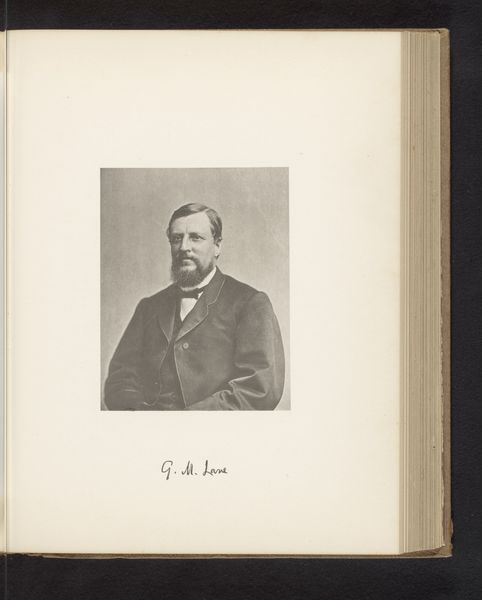
photography, gelatin-silver-print
#
portrait
#
impressionism
#
photography
#
gelatin-silver-print
Dimensions: height 330 mm, width 259 mm, height 503 mm, width 430 mm
Copyright: Rijks Museum: Open Domain
Curator: Here we have a gelatin-silver print simply titled “J.J. Witsen,” created sometime between 1860 and 1915. It’s attributed to Willem Witsen. What are your initial thoughts? Editor: It evokes a feeling of quiet contemplation, almost melancholic. The soft focus lends a dreamlike quality. The subject’s eyes seem to hold a lifetime of stories. Curator: Absolutely. This photograph comes at an interesting intersection in the history of portraiture. While photography democratized image-making, it also inherited the societal power dynamics present in painted portraiture. Witsen was part of a generation grappling with representing bourgeois identity. Editor: The subject's beard and neatly kept hair remind me of classical patriarchal figures, evoking stability and status. Is there any significance behind the repeated visual motifs throughout Witsen’s photographic portraits? Curator: His portraits often featured artists and intellectuals. He positions his subjects, primarily male, as cornerstones of Dutch cultural life. However, if we examine the role of women in that art world, they were consistently marginalized in the patriarchal structure Witsen upheld through such images. Editor: The gray scale seems key. The lack of color invites introspection. I see shades rather than stark lines which amplifies the psychological weight on the portrait. Do we know whether Witsen chose this process for emotional reasons or if it was based on photographic technologies? Curator: Most likely the techniques shaped Witsen's vision; photographic processes would have dictated the limited palettes available. Considering its impressionistic qualities, we might link the gelatin-silver print technique to Impressionist portraiture more broadly as a parallel strategy that softens outlines to draw emphasis to emotional essence rather than social status. Editor: Thinking about how he deliberately represents identity is enlightening. Considering the symbolic value of those choices offers rich opportunities to delve into our shared cultural memory. Curator: Indeed, and recognizing photography’s power—even back then—to actively shape cultural narratives surrounding status, gender, and class helps us decode not just a face, but the complex societal conditions of an era. Editor: Yes, looking at it again with the context you've offered allows me to recognize the historical, economic, and technological components shaping art in ways beyond merely emotional expression. Thank you.
Comments
No comments
Be the first to comment and join the conversation on the ultimate creative platform.
